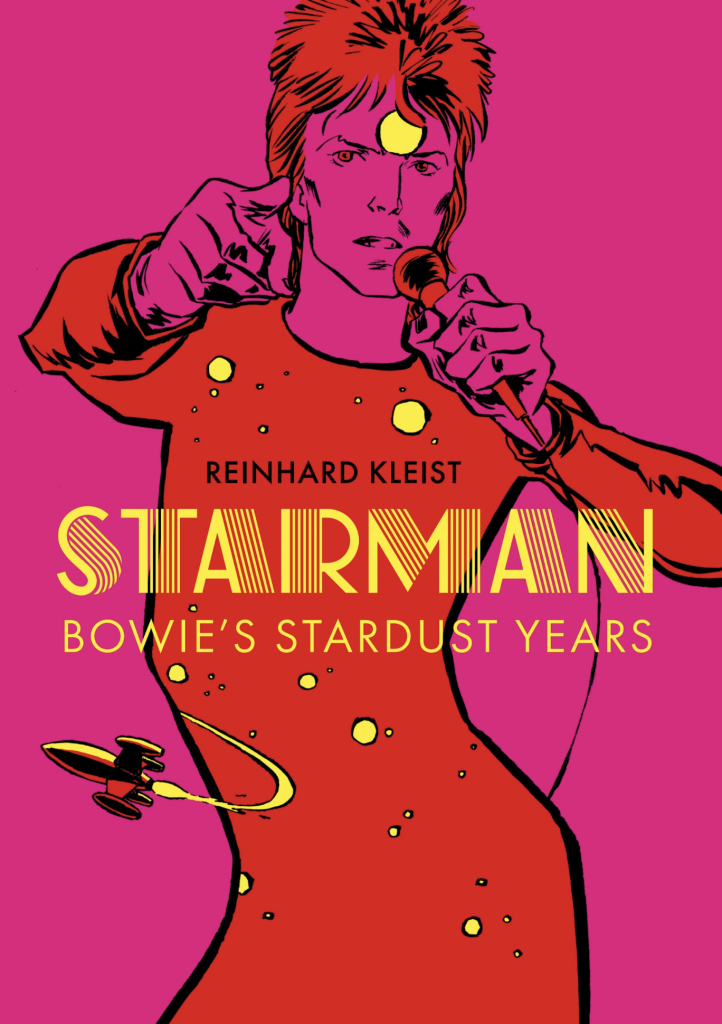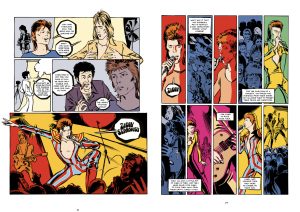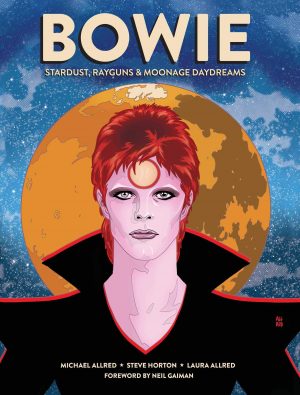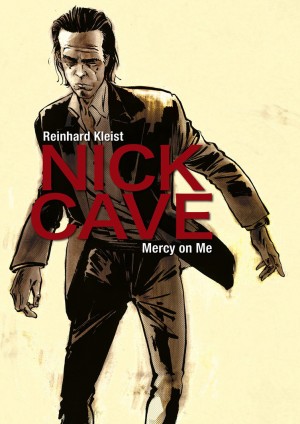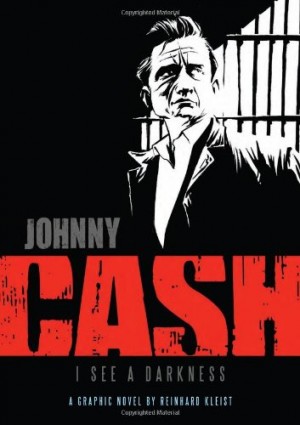Review by Graham Johnstone
Reinhard Kleist’s previous graphic biographies include singer/songwriters Johnny Cash and Nick Cave, and David Bowie provides another musical subject combining serious intent with popular appeal.
Kleist’s Starman follows three other graphic biographies of Bowie also targetting what Kleist’s subtitle calls the ‘Stardust Years’ (see recommendations). That’s no surprise. This period, from Bowie’s (moon landing inspired) 1969 hit ‘Space Oddity’, to the 1973 ‘retirement’ of stage persona Ziggy Stardust, offers the most dramatic fall, rise and climax of Bowie’s life, as well as a star themed beginning and end.
Kleist’s biographies often depart from literal facts for more symbolic and poetic scenes. This earned the endorsement of subject Nick Cave, as “more true than any biography could be”. So Kleist’s take on the man born David Jones, but presenting as David Bowie, Ziggy Stardust, and other mythic characters, is an appealing prospect. Does Starman meet expectations?
Compared to earlier Bowie biographies, Kleist is less reverent, and more concerned to spin a story. He turns Bowie’s management figures from details needing remembered, to memorable, competing, characters. Similarly Kleist avoids the objective third-person narration, in favour of subjective second-person, so allowing interpretation without claiming truth: “[did you, David, suspect] Ziggy may be a danger to you?” The result is sometimes insightful, sometimes intrusive, and typically bombastic: “some were ready for the message you proclaimed to them…” Happily, Kleist saves the device for the stage scenes, filling the absence of copyrighted lyrics (more later). Otherwise, he relies on well-honed dialogue to unfold the story and introduce characters. Star cameos of Lou Reed, Iggy Pop and Andy Warhol are memorable, while David’s family (“What do you look like?”) bring him back to earth. There’s a lot of story and character woven through these 160 pages.
Kleist’s Johnny Cash book dropped Cash into his song, ‘Fulsom Prison Blues’, and here he creates an extended visualisation of ‘Space Oddity’ juxtaposed with Bowie’s life. Kleist draws some smart parallels: to a career yet to launch, the void after the death of his father, and his institutionalised half-brother as broken mirror for the visionary David. Yet the sequence becomes over-extended and laboured, as if having shelled out the licensing fees, they had get their money’s worth.
Otherwise, story issues are minor. Kleist’s avoidance of narration can leave the reader guessing about dates and characters. ‘Tony’ turns out to be, not producer Visconti, but manager Defries (pictured, left). David’s future wife is introduced as ‘Angela’, teasing a moment that never comes, of her saying ‘call me Angie: Angie Bowie’. Such inattention could undermine the credibility of a straight biography, but is tolerable in Kleist’s biographical fiction .
Visually, Kleist’s drawing is confident, if careless on routine panels. He sets conversations in well-evoked settings of parties, record stores, and fashion mecca Carnaby St. He nails the famous faces, and revels in Bowie on stage, strutting like a superhero. Flashbacks approach Kleist’s usual monochrome, switching, with the help of colouring partner Thomas Gilke, to saturated primaries for the Ziggy years. Other touches, like Bowie ‘singing’ the (non-copyright) song titles in Glam Rock lettering, offer a neat solution to prohibitive licensing fees, and further add to a visually appealing book.
Kleist covers some familiar material, in a fresh and engaging way. Starman is less meticulous than other graphic novel biographies, but more fun, and channels Bowie’s signature visuals. Anyone with the slightest interest in a Bowie graphic novel should love this, and look forward to Kleist’s promised sequel – Low: David Bowie’s Berlin Years.
